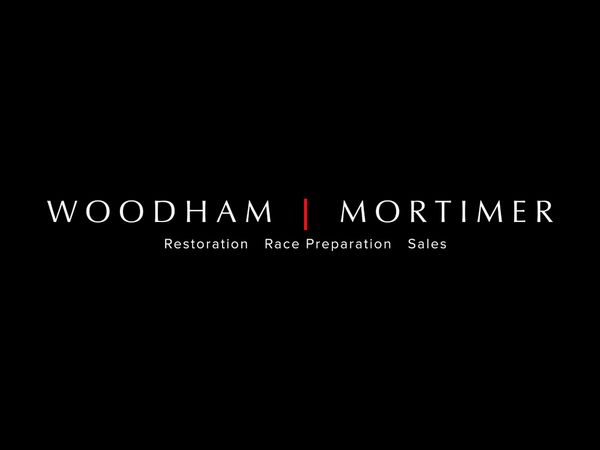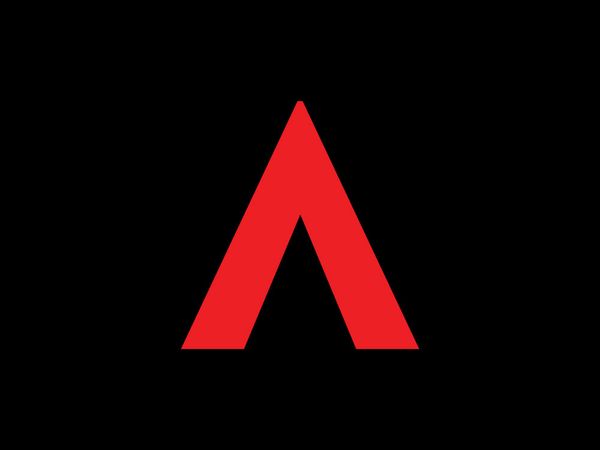The beauty of sports is that there is always opportunity, and in the event one opportunity doesn’t come to fruition, another opportunity is presented. Motorsports is no different, and in the 21-race FIA Formula One World Championship, opportunity beckons at each grand prix.
Haas F1 Team has gone into its past two races with high hopes buoyed by productive practice sessions and strong qualifying performances. But when the checkered flag dropped at the British Grand Prix and the Hungarian Grand Prix, Haas F1 Team left unfulfilled. Drivers Romain Grosjean and Esteban Gutiérrez finished outside the points in both races, which came following the team’s best collective result in the Austrian Grand Prix where Grosjean finished seventh and Gutiérrez finished 11th, one spot shy of scoring a point.
With the July 31 German Grand Prix at the Hockenheimring next up on the Formula One schedule, gelegenheit greets Haas F1 Team. The American team’s next race is, of course, their next opportunity, and it’s a coveted one for where it sits on the calendar.
The German Grand Prix is the last race before the three-week summer break, where during this span teams must observe a factory shutdown of 14 consecutive days. This means no work on the current car, and no development of any future cars. While the break is incredibly welcome for a series that visits 21 different countries between March and November, everyone wants to go into the hiatus with momentum that can be carried into the final, nine-race stretch that culminates with the season-ending Abu Dhabi Grand Prix Nov. 27.
Germany provides that opportunity. The 4.574-kilometer (2.842-mile), 17-turn Hockenheimring has hosted Formula One since 1970, with this year’s event serving as the venue’s 35th grand prix.
The Hockenheimring of today is very different from the one Formula One first visited in 1970. Gone are the incredibly long straights through the forest, consigned to history via a track redesign in 2002. The current track, however, is still plenty fast, with drivers reaching speeds in excess of 280 kph (174 mph) in the opening section alone. Drivers are at full throttle for two-thirds of every lap, putting exorbitant stress on engines and the fuel they consume. Fuel management is of utmost importance, and with the right application, can be achieved without sacrificing lap time. Efficient corner approaches can lead to fuel efficiency and overtaking, particularly at the hairpin in turn six and the tight turn eight. The juxtaposition of speeds between the straights and corners gives the new Hockenheimring plenty of character, and with the redesign, plenty of sight lines for the fans in attendance.
As the first American Formula One outfit in 30 years, Haas F1 Team has built plenty of character in its debut season. The organization has collected a total of 28 points 11 rounds into its inaugural campaign to stand eighth in the constructor standings, 10 points behind seventh-place McLaren and 22 points ahead of ninth-place Renault.
But standing pat does not interest Haas F1 Team. In fact, the only acceptable form of standing is on the gas, which Grosjean and Gutiérrez have demonstrated in qualifying of late. Each driver has been on the cusp of breaking into Q3, where only the 10 fastest drivers are eligible to compete for the pole.
This potential, combined with the opportunity,that awaits Haas F1 Team at Hockenheim, is exactly what the organization wants to seize on when the lights go out on Round 12 of the Formula One schedule.
Q & A with The Haas F1 Team
Guenther Steiner:
After the German Grand Prix, a three-week summer break for the Formula One industry begins. Where do you want the team to be going into the summer break?
“We would like to go into the summer shutdown one position higher than we are now in the championship. I think it’s always good that the last race, whether it’s before the summer shutdown or the next season, that you end up on a bit of a high, because then everybody relaxes and nobody is too worried. If we can get out of Germany with a few points, that would be fantastic for everybody.”
For 14 consecutive days during the summer break, teams must observe a factory shutdown. What are you able to do during the shutdown and what are you not able to do?
“It’s very simple. You’re not allowed to do anything on the car. You cannot develop. You cannot manufacture. But you can keep your business running as normal on the administrative side of things. You still need to pay your bills and you still need to make payroll, so all of that part of the business stays up and running.”
Are you looking forward to this three-week break or would you prefer to keep racing? Does this break allow for crew members to catch their breath and gear up for the final nine-race stretch, or does it impede the team’s momentum because the pace at which they’re used to working is drastically reduced?
“I think it’s good for the whole team to have a break because all of our guys have worked very hard to get where we are. And now, to just keep on going, it wouldn’t be productive. Sometimes a step back is two forward, and I think that’s how it is for us. Even if we interrupt our momentum, it’s still better to interrupt it and then start again than to keep on going and always be exhausted.”
Where are you in regard to development of the team’s 2017 car?
“We are fulltime on the 2017 car. We are not doing anything with the ‘16 car anymore. Where we are with the ‘17 car, we think we are in a good place, but until after we go out next year at the first test, we don’t know because other people are developing. We are always trying to hit a moving target, but everybody’s confident we are getting there. Wind tunnel sessions are filled with parts to try, we are doing CFD, we are maxed out on everything as allowed by the FIA and everybody seems to be confident that we are on the right path. Where we are – only next year will tell when we get on the track.”
How does the driver cockpit halo that might or might not be part of a car’s design in 2017 impact your development of next year’s car?
“At the moment, we are assuming that there will be a halo. And if there is none, it’s pretty simple to take it out before we go to production. And the production of the molds and the tooling will start sometime in September, so we’ve got still some time and, by then, it will be decided what to do.”
Many have said that this year, especially between now and the start of next season, will be the true test for Haas F1 Team because it has to race its current car while simultaneously developing next year’s car. Is that accurate, because this year, you don’t have to hire personnel and build your infrastructure from scratch?
“It is very similar to last year, and it is true that the second year is always the most difficult one. What helps us are our different locations. The race team, in our specific case, is completely independent from the development team. They interact, obviously, but they are not on each other’s toes every day because they don’t see them as much. The development of the ‘17 car is back in Italy and the race team is run out of the U.K. And the other thing is we decided to stop ‘16 car development quite early. So yeah, it will be difficult, but I’m confident that we can continue the trend like we started in ‘16 and go forward.”
How helpful is to have all your infrastructure in place, as opposed to last year when you were building your infrastructure?
“It is very helpful to have our infrastructure and our people in place. We don’t have to worry about can we get the right people? Are they working out? We have a lot of knowns now, and that makes me confident. We’ve got a lot of infrastructure in place personnel-wise and equipment-wise, which last year at this time, we didn’t have. So the risk, I think, was higher last year. We are in a good position, and it helps to have good people that you trust, that you work with and to have all the equipment in place. That is, for sure, a plus this year.”
The German Grand Prix will mark the third straight race where Charles Leclerc has driven for the team in the weekend’s opening practice session. And American Santino Ferrucci tested for the team at Silverstone following the British Grand Prix. Both drivers are 18 years old and competing in the GP3 Series. How quickly have they acclimated to driving a Formula One car and what kind of feedback have they been able to provide the team? Is their feedback similar to what Grosjean and Gutiérrez have said about the car?
“Both of them, they’re only 18 years old, and when we have them sit in a Formula One car for the first time, there’s always a little bit of, ‘Can they do this job?’ But they both performed at a very high level, and we were all positively surprised with both of them. They jumped in the car and they were confident and knew their stuff. They studied it at home, how all the equipment worked, the adjustments for the car, the electronics stuff. They were very professional about it. We are very proud of them for what they did for us. Their feedback on the car was exactly the same as Esteban’s and Romain’s, so I think they know what they’re doing.”
With drivers at full throttle for two-thirds of every lap at the Hockenheimring, how critical is fuel management?
“Fuel management is one of the very important tasks in current F1 cars. Just to make sure that you’ve got full power when you need it and not when you don’t need it. Depending on the position you’re in, sometimes it’s better to save fuel and sometimes it’s a big challenge. At Hockenheim, it’s a big challenge to use your fuel carefully.”
You’ve competed at the Hockenheimring and the Nurburgring. Do you like one over the other, or do they both have characteristics you enjoy?
“I think they’re both very nice. Nurburgring is normally very particular because they’ve got a good fan base there, a very loyal motorsport fan base. Of course, Hockenheim, in the old days, in the Schumacher days, it was a very big event. It’s always a great event.”
Romain Grosjean:
After the German Grand Prix, a three-week summer break for the Formula One industry begins. Where do you want the team to be going into the summer break?
“I’d like us to go into the break with a strong final race. It’s always good to get a morale boost before the shutdown. Everyone can reflect on what we’ve done and what we can do better. It’s important for everyone to get a rest. It’s a long season and we’re only just over halfway through at the break. The big flyaway races come after that. We’ve had an amazing first half of the season and I’m sure we can do more in the second half. For that, we really need to keep working, keep our focus and take some rest whenever we can.”
Are you looking forward to this three-week break or would you prefer to keep racing and not disrupt your momentum?
“Looking at my children’s faces when I’ve left the house for the last couple of races, I better be having a summer break! It’s hard on the team and, of course, their families, everyone really. Twenty-one grands prix makes for a long season. I’m very happy that we get a summer break. We can enjoy a few glasses of rosé, be a bit more chilled out for a week or two, do some training, then get straight back into it even fitter than before.”
What do you plan to do during the summer break?
“My plan for the three weeks we’re off is to train for two weeks, then have a holiday for the other week. I’m going to spend time with my family close to the sea, basically chill out after my training.”
You’re at full throttle for two-thirds of every lap at the Hockenheimring. How do you go about managing fuel without sacrificing track position?
“Hockenheim is definitely a lot about straight-line speed, braking and traction out of the corners. When you get good traction through the low-speed corners, you have a much better straight-line speed. You’ve got the stadium part, which is very narrow as well. It’s a good balance between having top speeds and fuel efficiency, and traction and braking being suitable.”
You’re running the same tire compounds – medium, soft and supersoft – that you ran last weekend in Hungary. How helpful is it to have the same tire compounds on back-to-back weekends? Does it allow for some consistency in how the car feels?
“It doesn’t mean much to have the same tire compounds on back-to-back weekends. So much depends on the track, the tarmac and the temperature. It’s very difficult just to be able to say that because we were good on a certain tire at a certain track that it just reapplies. You always need to re-think these things and start at the beginning.”
It seems like the team as a whole is getting better and better with finding and understanding the working ranges of each tire compound, regardless of the weather conditions. Is this just a matter of a new team getting more experience, or have you discovered some nuances with the car’s setup that seem to better complement the tires?
“It’s a little bit of everything. The more time we have, the more experience we build up as a team, the more we can understand the tires. We’ve also created tools to help the tires to work and put them in a good window.”
You’ve competed at the Hockenheimring and the Nurburgring. Do you like one over the other, or do they both have characteristics you enjoy?
“I actually like both. I’ve got some good memories from Hockenheim and the Nurburgring. I probably prefer the Nurburgring as a track, but I became European F3 champion at Hockenheim back in 2007, so naturally I like the place as well.”
How has the Hockenheimring changed since your junior career, and are those memories rekindled when you return for Formula One?
“It actually hasn’t changed at all since those days. It’s always great to visit somewhere with good memories. I won at the circuit in Formula 3, and in Formula Renault 1.6. I won there in the GP2 Series until a post-race penalty dropped me to second. Every year is different though. It doesn’t matter what happened in the past. The important thing is to make it count now.”
What is your favorite part of the Hockenheimring?
“The entry into the stadium section is definitely my favorite part of the Hockenheimring. It’s amazing. You’re coming in from really fast corners, then you just turn into a very narrow section of the track. It’s fun.”
Describe a lap around the Hockenheimring.
“After the start-finish line, the first corner is the most exciting one. It’s a very high-speed, right-hand side corner. Normally you brake just a little bit, just one gear downshift, and then you’re on a straight line. Turn two with tricky braking and certainly very tricky throttle application. You’re turning from right to left to go on the main straight. You really want to go on the power as early as you can to get a good straight line. Big braking for the hairpin next. Coming back to the Mercedes corner, a right-hand side corner flat out, then braking to the 110 degree left-hand side corner. Again, there’s a challenging throttle application there as you’re turning right straight after, just about flat. Then entering the stadium, there’s a bit of braking to the right-hand side, very high-speed corner. The Sachskurve is a very high-banked corner, left hairpin. It’s quite open, though, with a few lines through it. Then you go to the last couple of corners – they’re quite famous. You try to carry as much speed as you can to the first one, and go as flat as you can for the second one to get a good lap time.”
“Fuel management is one of the very important tasks in current F1 cars. Just to make sure that you’ve got full power when you need it and not when you don’t need it. Depending on the position you’re in, sometimes it’s better to save fuel and sometimes it’s a big challenge. At Hockenheim, it’s a big challenge to use your fuel carefully.”
Esteban Gutiérrez:
After the German Grand Prix, a three-week summer break for the Formula One industry begins. Where do you want the team to be going into the summer break?
“I want the team to be going into the summer break in good shape with a positive race at Hockenheim. I feel it will be an important occasion for every team member to also recharge their batteries because it has been quite a nonstop season for us right from the beginning. It will be an important break. Everyone can come back strong and we can continue our way through the season.”
Are you looking forward to this three-week break or would you prefer to keep racing and not disrupt your momentum?
“I think it’s good to have a break in between, not only for myself, but also for the team. The guys need to have time with their family and to rest, and it’s an opportunity for us to keep up our training, consistently, and with a good rhythm. Usually when you are already through the season, it starts to become a challenge trying to keep yourself at the same level with all the traveling. So when you have a break, you can use that time to build up a bit better condition.”
What do you plan to do during the summer break?
“Usually, I go back to visit my family and I’m looking forward to that, spending good time with them with good weather. The Mexican summer, it’s pretty hot, so I will enjoy that, for sure. Play all the sports, play golf, play tennis, do different things. Mountain bike up the mountain, nice things, enjoying seeing my friends and family, recovering and keeping up my training in order to come back with full batteries.”
You’re at full throttle for two-thirds of every lap at the Hockenheimring. How do you go about managing fuel without sacrificing track position?
“There are different tricks to save fuel without losing much track time, so that’s what we need to focus on. The corners are good for that – approaching the corners in different ways – that gives you a lot of fuel saving. I don’t expect that to be much of a problem for us. Hopefully, it will be pretty equal between most of the cars on the grid so we can compete at the same level.”
You’re running the same tire compounds – medium, soft and supersoft – that you ran last weekend in Hungary. How helpful is it to have the same tire compounds on back-to-back weekends? Does it allow for some consistency in how the car feels?
“We have some experience already with the supersoft and the soft, so it’s not really varying a lot. It’s also important to consider that the tracks are very different and the track conditions are very different. Hungary was pretty hot and it had a new surface. Hockenheim is usually not that hot, so we have the weather varying quite a lot. We try to make the best out of the moment and try to understand the best way possible. Obviously, that gives you a bit more consistency, which gives you a bit more confidence in what you can expect. That’s the benefit.”
You’ve competed at the Hockenheimring and the Nurburgring. Do you like one over the other, or do they both have characteristics you enjoy?
“They both have characteristics that I enjoy, but I tend to like Hockenheim for some reason. It’s one of my favorite tracks. It’s one of the first I drove in Europe when I came to race Formula BMW in 2008. It’s a pretty special place for me. There are some corners that I really love about it.”
What is your favorite part of the Hockenheimring?
“Definitely the entry to the stadium. It’s a very high-speed corner, and you enter with a lot of speed and no margin of mistake. You have the gravel straight away and then you have a very narrow track, and it arrives into the banked corner, which is really interesting.”
Describe a lap around the Hockenheimring.
“You arrive into turn one – it’s a pretty fast corner, probably downshift only one or two gears. The angle of the corner is not very rounded, so you usually have to put the car very precisely to the curb without having much reference on entry. You approach turn two – it’s a bit bumpy, and its important preparation for the whole straight, which is very long. You exit turn two and go into turn three, and you arrive into turn four which is the hairpin. Very big braking from around 320 to maybe 50 kph in less than 120 meters, so it’s an interesting corner. To get traction and good car balance is important on the mechanical side. You exit that corner with a lot of inertia and then you approach turn five, which is a high-speed corner that is flat out to the right. You arrive into turn eight, which is Mercedes corner, to the left. It’s a 90-degree corner, but then there’s a series of corners where you have to turn left and then right and it really puts the car on the edge all the time with a lot of load. Then you come into this small straight which leads to one of my favorite corners of the season – the entry of the stadium – a very high-speed corner. You throw a lot of speed in, and then you have the next corner with a lot of banking to the left. You enter with a lot of speed and then you can use the banking to really stop the car in the middle of the corner and then come back and have a good exit. You go into the last section, which is a series of corners that puts a lot of energy into the tires. Going into the last few corners, there is some surface change up and down. Overall, Hockenheimring is a very nice track to drive.”
Hockenheimring
Total number of race laps: 67Complete race distance: 306.458 kilometers (190.424 miles)Pit lane speed limit: 80 kph (50 mph)This 4.574-kilometer (2.842-mile), 17-turn circuit has hosted Formula One since 1970, with the 2014 German Grand Prix serving as the venue’s 34th and most recent grand prix.Kimi Raikkonen holds the race lap record at the Hockenheimring (1:13.780) set in 2004 with McLaren.Michael Schumacher holds the qualifying lap record at the Hockenheimring (1:13.306), set in 2004 with Scuderia Ferrari.The Hockenheimring of today is very different from the one Formula One first visited in 1970. Gone are the incredibly long straights through the forest, consigned to history via a track redesign in 2002. The current track, however, is still plenty fast, with drivers reaching speeds in excess of 280 kph (174 mph) in the opening section alone. Drivers are at full throttle for two-thirds of every lap, putting exorbitant stress on engines and the fuel they consume. Fuel management is of utmost importance, and with the right application, can be achieved without sacrificing lap time. Efficient corner approaches can lead to fuel efficiency and overtaking, particularly at the hairpin in turn six and the tight turn eight. The juxtaposition of speeds between the straights and corners gives the new Hockenheim plenty of character, and with the redesign, plenty of sight lines for the fans in attendance.DYK? The original Hockenheimring was built in 1939 as a high-speed test track for Mercedes-Benz, which needed a venue to test for the Tripoli Grand Prix. It was almost eight kilometers in length, nearly twice the distance of the track’s current layout.During the course of the German Grand Prix, lows will range from 15-16 degrees Celsius (59-61 degrees Fahrenheit) to highs of 26-28 degrees Celsius (78-83 degrees Fahrenheit). Relative humidity ranges from 40 percent (comfortable) to 88 percent (very humid), with a dew point varying from 10 degrees Celsius/50 degrees Fahrenheit (very comfortable) to 16 degrees Celsius/60 degrees Fahrenheit (comfortable). The dew point is rarely below 7 degrees Celsius/44 degrees Fahrenheit (dry) or above 19 degrees Celsius/66 degrees Fahrenheit (muggy). Typical wind speeds vary from 3-18 kph/2-11 mph (light air to gentle breeze), rarely exceeding 24 kph/15 mph (moderate breeze).
Pirelli is bringing three tire compounds to Germany:P Zero White medium – less grip, less wear (used for long-race stints)Theoretically, this is the most balanced of Pirelli’s Formula One tires, with an ideal compromise between performance and durability. It is an extremely versatile tire, but works best on circuits with high speeds, high temperatures and high energy loadings. It is a high working-range compound.P Zero Yellow soft – more grip, medium wear (used for shorter-race stints and initial portion of qualifying)This is one of the most frequently used tires in Pirelli’s range, as it strikes a balance between performance and durability, with the accent on performance. It is still geared toward speed rather than long distances, but it remains capable of providing teams with a competitive advantage at the beginning of the race where cars are carrying a full fuel load and at the end of the race where the fuel load is much lighter and the race effectively becomes a sprint. It is a high working-range compound.P Zero Red supersoft – highest amount of grip, highest amount of wear (used for qualifying and select race situations)This is the second softest tire in Pirelli’s range, and it is ideal for tight and twisting circuits, especially in cold weather when maximum grip is needed. The supersofts warm up rapidly, which has made it a stalwart choice for qualifying. But with increased grip comes increased degradation. It is a low working-range compound.Two of the three available compounds must be used during the race. Teams are able to decide when they want to run which compound, adding an element of strategy to the race. A driver can also use all three sets of Pirelli tires in the race, if they so desire. (If there are wet track conditions, the Cinturato Blue full wet tire and the Cinturato Green intermediate tire will be made available.)Pirelli provides each driver 13 sets of dry tires for the race weekend. Of those 13 sets, drivers and their teams can choose the specifications of 10 of those sets from the three compounds Pirelli selected. The remaining three sets are defined by Pirelli – two mandatory tire specifications for the race (one set of P Zero White mediums and one set of P Zero Yellow softs) and one mandatory specification for Q3 (one set of P Zero Red supersofts). Haas F1 Team’s drivers have selected the following amounts:Grosjean: one set of P Zero White mediums, five sets of P Zero Yellow softs and seven sets of P Zero Red supersoftsGutiérrez: one set of P Zero White mediums, five sets of P Zero Yellow softs and seven sets of P Zero Red supersofts



























